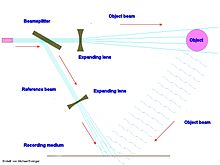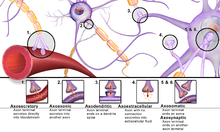 |
| Poet Denise Levertov |
Agnus Deiby Denise Levertov
Given that lambs
are infant sheep,
that sheep are afraid and foolish, and lack
the means of self-protection, having
neither rage nor claws,
venom nor cunning,
what then
is this ‘Lamb of God’?
This pretty creature, vigorous
to nuzzle at milky dugs,
woolbearer, bleater,
leaper in air for delight of being, who finds in astonishment
four legs to land on, the grass
all it knows of the world?
With whom we would like to play,
whom we’d lead with ribbons, but may not bring
into our houses because
it would spoil the floor with its droppings?
What terror lies concealed
in strangest words, O lamb
of God that taketh away
the Sins of the World: an innocence
smelling of ignorance,
born in bloody snowdrifts,
licked by forebearing
dogs more intelligent than its entire flock put together?
God then,
encompassing all things, is
defenseless? Omnipotence
has been tossed away,
reduced to a wisp of damp wool?
And we
frightened, bored, wanting
only to sleep ‘til catastrophe
has raged, clashed, seethed and gone by without us,
wanting then
to awaken in quietude without remembrance of agony,
we who in shamefaced private hope
had looked to be plucked from fire and given
a bliss we deserved for having imagined it,
is it implied that we
must protect this perversely weak
animal, whose muzzle’s nudgings
suppose there is milk to be found in us?
Must hold in our icy hearts
a shivering God?
So be it.
Come, rag of pungent
quiverings,
dim star.
Let’s try
if something human still
can shield you,
spark
of remote light.
On Easter Sunday, we Christians condensed our confession
down to three words: "Christ is risen!"
In the hot street at noon I saw hima small mangray but vivid, standing forthbeyond the crowd’s buzzingholding in desperate grip his shakingteethgnashing son,and thought him my brother.I heard him cry out, weeping and speakthose words,Lord, I believe, help thoumine unbelief,and knew himmy twin:a man whose entire beinghad knotted itselfinto the one tightdrawn question,Why,why has this child lost his childhood in suffering,why is this child who will soon be a mantormented, torn, twisted?Why is he cruelly punishedwho has done nothing except be born?The twin of my birthwas not so closeas that man I heardsay what my heartsighed with each beat, my breath silentlycried in and out,in and out.After the healing,he, with his wonderingnewly peaceful boy, receded;no onedwells on the gratitude, the astonished joy,the swiftacceptance and forgetting.I did not followto see their changed lives.What I retainedwas the flash of kinship.Despiteall that I witnessed,his question remainedmy question, throbbed like a stealthy cancer,knownonly to doctor and patient. To othersI seemed well enough.So it wasthat after Golgothamy spirit in secretlurched in the same convulsed writhingsthat tore that childbefore he was healed.And after the empty tombwhen they told me that He lived, had spoken to Magdalen,told methat though He had passed through the door like a ghostHe had breathed on themthe breath of a living man –even thenwhen hope tried with a flutter of wingsto lift me –still, alone with myself,my heavy cry was the same: LordI believe,help thou mine unbelief.I neededblood to tell me the truth,the touchof blood. Evenmy sight of the dark crust of itround the nailholesdidn’t thrust its meaning all the way throughto that manifold knot in methat willed to possess all knowledge,refusing to loosenunless that insistence wonthe battle I fought with lifeBut when my handled by His hand’s firm claspentered the unhealed wound,my fingers encounteringrib-bone and pulsing heat,what I felt was notscalding pain, shame for myobstinate need,but light, light streaminginto me, over me, filling the roomas I had lived till thenin a cold cave, and nowcoming forth for the first time,the knot that bound me unravelling,I witnessedall things quicken to color, to form,my questionnot answered but givenits partin a vast unfolding design litby a risen sun.
Not all those who saw the risen Christ believed. In his last recorded appearance in Matthew 28:17, we read that "when they saw him, they worshiped, but some were doubtful."
Likewise in 1 Peter 1:8: "Though you have not seen him, you love him, and though you do not see him now, but believe in him, you greatly rejoice with joy inexpressible and full of glory."
NOTE: For more on Levertov, see the two critical biographies by Dana Green, Denise Levertov: A Poet's Life (Chicago: University of Illinois, 2012); and Donna Krolik Hollenberg, A Poet's Revolution: The Life of Denise Levertov (Berkeley: University of California Press, 2013); and the recent Denise Levertov, Collected Poems, edited and annotated by Paul A. Lacey and Anne Dewey, with an Introduction by Eavan Boland (New York: New Directions, 2013), 1063pp.
Poetry and Prayer: Continuities & Discontinuities - 'Denise Levertov: Poetry as a Way to Prayer'An international conference organized jointly by the Institute of English Studies and Heythrop College, University of London.The analogy and continuity between poetry and prayer, the poetical and the mystical, has often been discussed. The psychological mechanism used by grace to raise us to prayer is, Henry Bremond wrote, the same as that set in motion in poetic experience. Both poetry and prayer are rooted in an inner experience of concrete and fundamental values so that both invite, using the language of John Henry Newman, a real rather than a notional assent. Reading a poem can be perceived as a prayerful experience. W.H. Auden wrote: 'to pray is to pay attention to something or someone other than oneself. Whenever a man so concentrates his attention -- on a landscape, a poem, a geometrical problem, an idol, or the True God -- that he completely forgets his own ego and desires, he is praying.'And yet it is also true that we have no shared understanding of the terms 'prayer' and 'poetry'. Some might claim that there is no connection between them. The traditions of poetry and prayer are numerous and the connections between them elusive. And poetry is, self-evidently, not exactly the same as prayer.The conference will consider the similarities, interrelatedness and differences between poetry and prayer. What do poetry and prayer share? How do they differ? In what ways do they relate to each other? Theoretical reflections and historical surveys will provide a context for the discussion of individual texts and authors from different countries and cultural and religious traditions.
Denise Levertov reads six poems from her later collections, three from EVENING TRAIN (1992) and three later included in her posthumously published collection SANDS OF THE WELL (1998). This is an extract from an hour-long reading she gave for the Lannan Foundation in Los Angeles on 7 December 1993. The poems are: 'Settling', 'Open Secret', 'Tragic Error', 'The Danger Moment', 'A Gift' and 'For Those Whom the Gods Love Less', three of which were also included in her SELECTED POEMS (New Directions, 2002), which was published in Britain as NEW SELECTED POEMS (Bloodaxe Books, 2003):
http://www.bloodaxebooks.com/titlepag...Denise Levertov (1923-97) was born in Essex, and educated at home by her father, a Russian Jewish immigrant, who became an Anglican priest, and by her Welsh mother. In 1948, she emigrated to America, where she was acclaimed by Kenneth Rexroth in The New York Times as 'the most subtly skilful poet of her generation, the most profound, the most modest, the most moving,' and during the following decades she became 'a poet who may just be the finest writing in English today' (Kirkus Reviews). Throughout her life, she worked also as a political activist, campaigning tirelessly for civil rights and environmental causes, and against the Vietnam War, the Bomb and US-backed regimes in Latin America.This video is copyright Lannan Foundation 1994 and posted on YouTube with the permission of the Lannan Foundation.
The Poetry of R.E. Slater - "Meet Poet Denise Levertov"



















